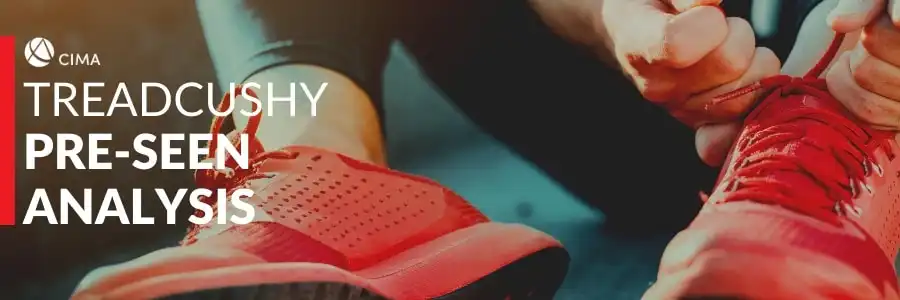IBTC lecturer, Pilisa Matyholo, has broken down the Operational Case Study Pre-Seen and highlighted some things you should know when preparing for the February Case Study exam.
Here is what he had to say.
For this round of Operational level case study examinations, we are employed by a company called 'TreadCushy' which designs, manufactures and sells a range of athletic shoes.
Here’s the lowdown;
TreadCushy was founded in 2007 by Sophia and Harry after working together for a major worldwide athletic shoe and clothing brand. The pair shared a lot in common and were both interested in the adverse impact this industry has on the environment, and decided to start their own company that made shoes from natural and recycled materials.
The company has grown from strength to strength with an appeal to a broad customer base, with more and more people becoming conscious of the carbon footprint we are leaving on this planet. To think that it takes 30-40 years for a pair of running shoes to decompose is scary.
TreadCushy sells its shoes directly to consumers through several channels, including their website, shopping app and retail stores. The bulk of their sales are made via online channels. The company has enjoyed a lot of growth over the years. In its last financial year it sold 700 000 pairs of shoes and grew its sales by 14,6% to K$68mil - an impressive number considering that the industry it plays in has been growing at 5%, and is expected to only grow at about 7% over the next 5 years. The company forcasts to sell 1 000 000 pairs of shoes in the next few years. Even more impressive is the fact that the company has already doubled its profitability.
The athletic shoe industry is dominated by big global brands, think Nike, Adidas, Puma and Reebok to name just a few. What sets TreadCushy apart though is their focus on a niche market. You may want to Google companies such as Allbirds, Nothing New, Veja and Cariuma to get a sense of what TreadCushy is all about. I have spent the last couple of weeks researching this industry and it’s safe to say that I will think twice about where I buy my next set of sneakers.
Key take outs from this pre-seen are:
- TreadCushy has growth ambitions. It aims to sell 1 000 000 pairs of shoes per annum and be carbon neutral by 2030.
- The company sells directly to customer and on a cash only basis. An opportunity would be to consider B2B, B2G and possibly selling on credit.
- A major threat to TreadCushy is the consistent availability of materials.
- The company has a ‘conservative approach’ to finished goods inventory management which could be disastrous in an environment where new designs are launched every 6 months.
- TreadCushy uses Absorption Costing despite having a fairly complicated manufacturing process and wide range of products, which are amongst some valid arguments in favour of Activity Based Costing or Digital Costing.
- There is a glaring misalignment between the standards being updated annually in relation to biannual launches
- There is very limited involvement of managers in the budget setting even though they are responsible for achieving the set targets. What could be the alternative approaches in this regard?
- The company sells several ranges and variants; this lends itself very well to mix variances.
- There are several digital technologies that TreadCushy could employ such as AI, 3D printing, CAD and RPA from your E1 paper.
- Smart tech is a major opportunity for TreadCushy. This could include launching wearable tech, developing smart shoes and enhanced in-store experience.
Are you considering taking the November 2021 or February 2022 exam? Here is what you need to remember
- You need to be familiar with the pre-seen and conduct a high-level desktop research.
- You need to be familiar with CIMA OCS blueprints, these are available at no cost to you . You can find them here.
- You must read the examiners comments from the recent Post Exam Kits. The examiners warn you of what you need to be on the lookout for.
- Cover your basics and revise your key areas from each of the underlying papers (F1, P1 & E1)
- Practice, practice, practice under “exam conditions”. Attempt mock exams and past papers.
- Polish your skills, technical skills, business acumen, leadership & people skills all underpinned by digital skills .
- Most importantly study more frequently for at least 2-3 hour per session.
On behalf of all of us here at IBTC, we would like to wish you everything of the best.







